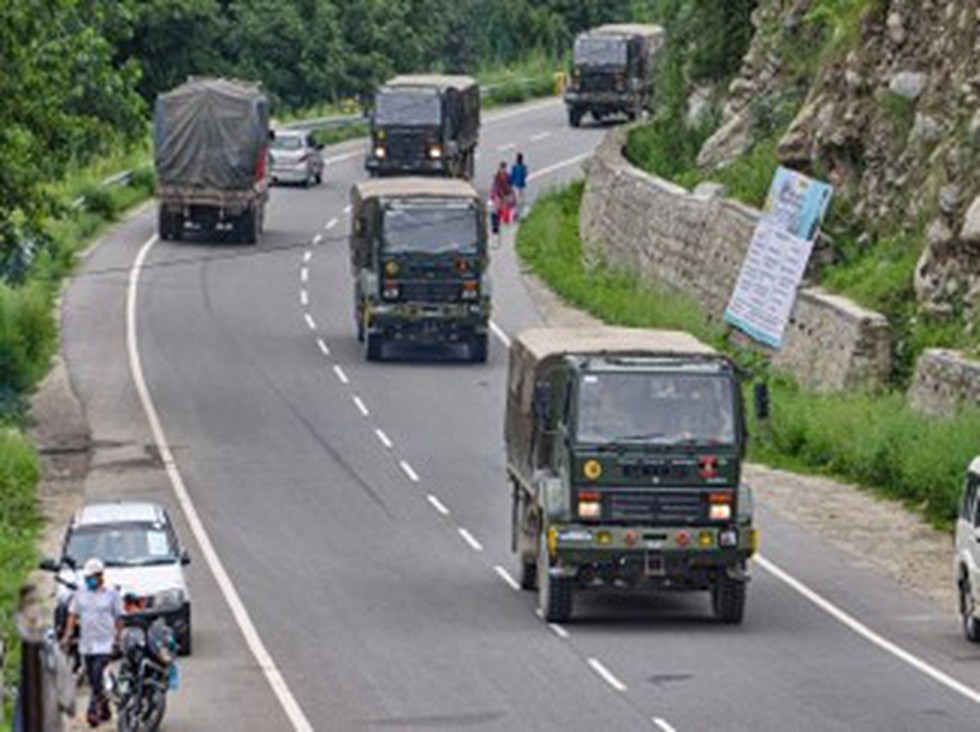
About India-Myanmar-Thailand Trilateral Highway:
- It is a significant regional connectivity project that aims to establish a road link between India, Myanmar, and Thailand.
- The highway will span a distance of approximately 1,360 kilometres (845 miles), starting from Moreh in Manipur, India, and passing through Myanmar before reaching Mae Sot in Thailand.
- It was first proposed by former Prime Minister Atal Behari Vajpayee and was approved at a ministerial-level meeting between India, Myanmar and Thailand in April 2002.
- The construction of the India-Myanmar-Thailand Trilateral Highway began in 2012 and is being implemented in several phases.
- The India-Myanmar Friendship Road forms the first segment of the IMT Highway. It runs from the border at Tamu/Moreh to Kalemyo and Kalewa.
- Implementing agencies: On the Indian side, the project is being implemented by the Ministry of External Affairs (MEA) with the cooperation of its counterparts in Myanmar and Thailand and budgetary allocation from the Ministry of Finance.

About Northern/Interaction-2023:
- Northern/Interaction-2023 military drills is organized by the Chinese People’s Liberation Army Northern Theatre Command in the central Sea of Japan.
- The event marks Russia's second time participating in the PLA annual strategic drills, and also a first that Russia has dispatched both naval and air forces to participate in similar events.
- The drills are themed "safeguarding the safety of strategic maritime routes".
- In August 2021, Russia participated in the "Western/Interaction-2021" exercise held at Northwest China's Ningxia Hui Autonomous Region, which marked the first time that China invited foreign forces to participate in its annual strategic exercises in its territory.
- "Northern/Interaction-2023" drills are organized by the PLA Northern Theatre Command, while PLA forces participating in the previous "Western/Interaction-2021" exercise were mainly composed of forces from the Western Theatre Command.
Key facts about Sea of Japan:
- Sea of Japan (East Sea) is a marginal sea of the western Pacific Ocean.
- It is located in Eastern Asia that is bounded by Japan and Sakhalin Island to the east and by Russia and Korea on the Asian mainland to the west.
- Its area is 377,600 square miles(978,000 square km).
- The sea itself lies in a deep basin, separated from the East China Sea to the south by the Tsushima and Korea straits and from the Sea of Okhotsk to the north by the La Perouse (or Sōya) and Tatar straits.
- To the east it is also connected with the Inland Sea of Japan by the Kanmon Strait and to the Pacific by the Tsugaru Strait.
- It influences the climate of Japan because of its relatively warm waters.
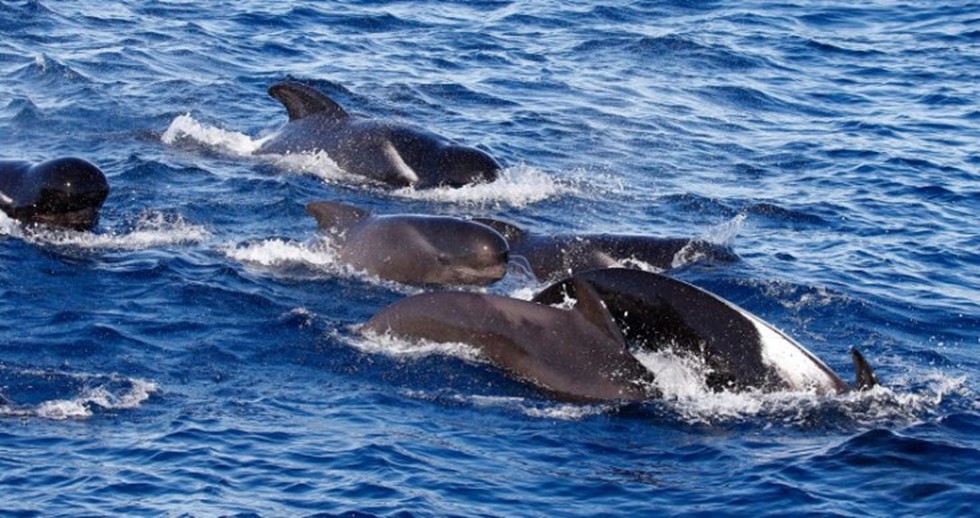
About Pilot Whales:
- Despite their name, pilot whales are one of the largest members of the dolphin family.
- They belong to the dolphin family Delphinidae.
- There are two species of pilot whales:
- Short-finned pilot whales(Globicephala macrorhynchus), which are mainly found in tropical and warm-temperate regions.
- Long-finned pilot whales (G. melas), which inhabit colder waters.
- Features:
- They are characterized by a round bulging forehead, a short beaklike snout, and slender pointed flippers.
- The short-finned pilot whale (Globicephala macrorhynchus) and the long-finned pilot whale (G. melas) are similar in appearance except for the pronounced difference in flipper length between the two species.
- Both long-finned and short-finned pilot whales are about 4–6 metres (13–20 feet) long.
- Males of both species are larger than females.
- Both species are black, and some individuals have a pale, elongated anchor-shaped mark adorning the throat and chest.
- Pilot whales live in groups numbering from dozens to hundreds.
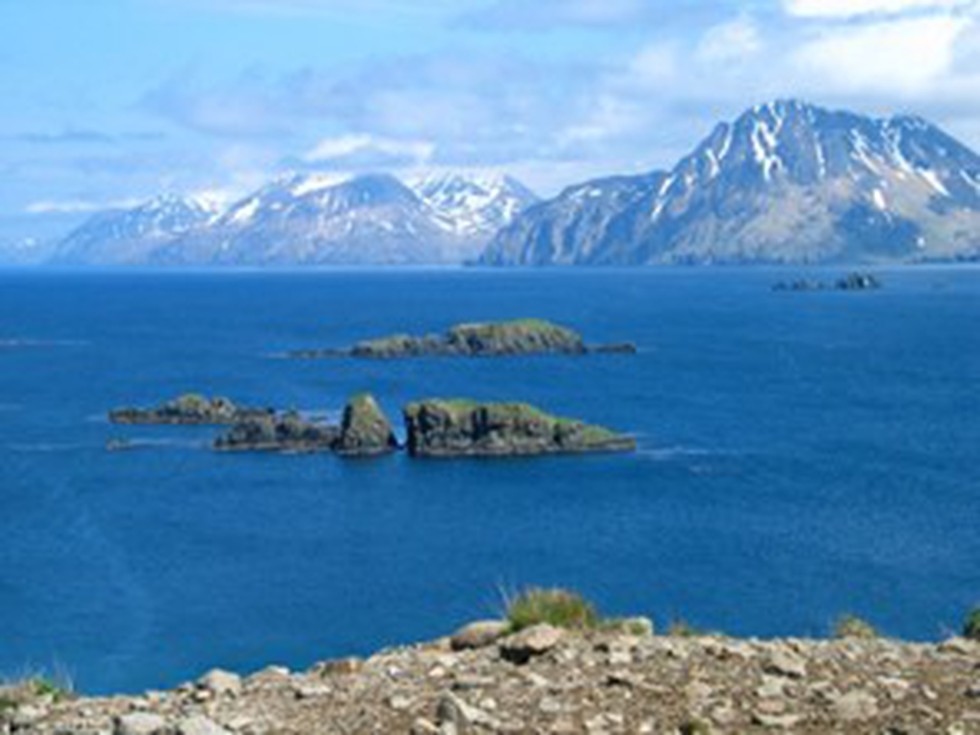
About Alaska Peninsula:
- Location:
- It is a long, narrow strip of land located in the southwestern part of the U.S. state of Alaska.
- It extends about 800 kilometres (500 miles) in a southwest direction from the mainland of Alaska.
- It separates the Pacific Ocean from Bristol Bay, an arm of the Bering Sea.
- Physiography: The peninsula is largely mountainous, with numerous active and dormant volcanoes, rugged coastlines, deep fjords, and vast expanses of wilderness.
- Volcanism:
- The volcanic Aleutian Range runs along its entire length.
- The Pavlof Volcano, near the peninsula’s southwestern edge, rises to more than 8,260 feet (2,518 metres) and is the most active volcano in the Aleutian volcanic arc.
- Population:
- It has been inhabited for thousands of years by indigenous peoples, primarily the Aleut and Alutiiq (Sugpiaq) communities.
- It is sparsely populated, with small communities scattered along its coastline.
- Biodiversity:
- It is home to diverse wildlife, including brown bears, caribou, moose, wolves, bald eagles, and various marine mammals.
- The famous Katmai National Park and Preserve, known for its brown bear population and the Valley of Ten Thousand Smokes, is located on the northeastern part of the peninsula.
What is a Peninsula?
- A peninsula is a piece of land that is almost entirely surrounded by water but is connected to the mainland on one side.
- It is an extension of land that juts out into a body of water, such as an ocean, sea, lake, or river.
- Peninsulas are typically narrow and elongated in shape, although their size can vary significantly.

About Fibromyalgia:
- It is a long-term (chronic) health condition that causes pain and tenderness throughout your body.
- It causes musculoskeletal pain and fatigue.
- What causes it?
- The cause of fibromyalgia is not known, but studies show that people with the disorder have a heightened sensitivity to pain, so they feel pain when others do not.
- Researchers believe that fibromyalgia amplifies painful sensations by affecting the way your brain and spinal cord process painful and nonpainful signals.
- People with fibromyalgia usually experience symptoms that come and go in periods called flare-ups.
- Symptoms: The two most common symptoms of fibromyalgia are pain and fatigue. Other symptoms include,
- Muscle pain or tenderness.
- Fatigue.
- Face and jaw pain (temporomandibular joint disorders).
- Headaches and migraines.
- Digestive problems, including diarrhoea and constipation.
- Bladder control issues.
- Who is affected by fibromyalgia?
- Anyone can develop fibromyalgia. It affects people of any age, including children.
- Women are more likely to develop fibromyalgia than men.
- Treatment:
- While there is no cure for fibromyalgia, a variety of medications can help control symptoms.
- Treatment typically involves a combination of exercise or other movement therapies, psychological and behavioural therapy, and medications.
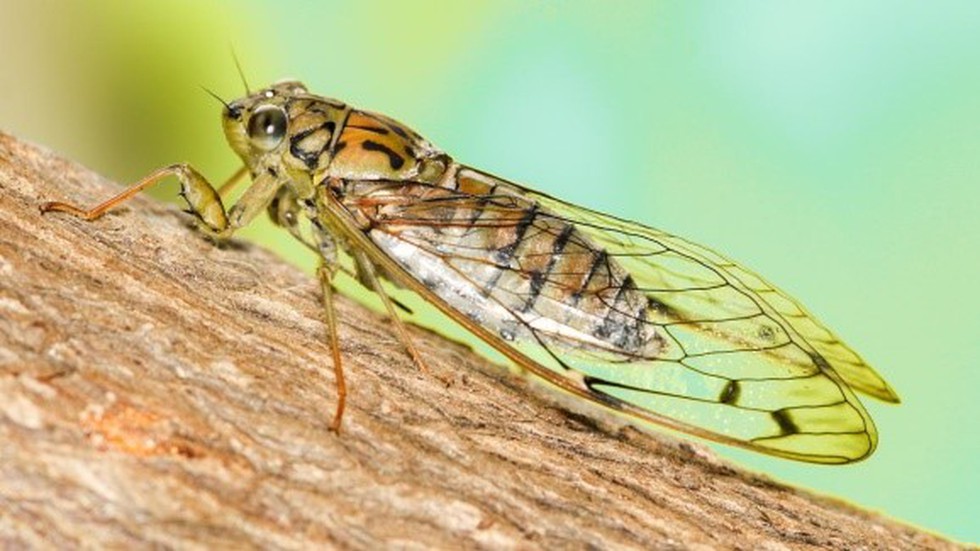
Why in news?
- The insect species that has now been named as Purana cheeveeda (after its Malayalam name Cheeveedu) used to be mistaken for Purana tigrina, a species that was first described in Malaysia in 1850.
- Due to the differences in their morphological characteristics, the Association for Advancement in Entomology has corrected the longstanding error in taxonomic identification and has excluded the Malaysian species from the South Indian cicada fauna.
Key Facts about Cicada:
- Cicadas are hemipteran insects known for their loud, complex and species-specific acoustic signals or songs.
- The generic diversity of cicadas in India and Bangladesh ranks the highest in the world, followed by China.
- Most cicadas are canopy dwellers and are found in natural forests with large trees.
- cheeveeda could extend across the tropical evergreen forests ranging from Goa to Kanyakumari.
- Types of Cicada
- Scientists divide the over 3,000 cicada species into two groups: annual and periodical.
- Annual cicadas emerge from the ground at different times each summer.
- They’re usually dark with greenish markings.
- These insects avoid predators by camouflaging themselves in the trees and flying from hungry birds and moles.
- Only seven species of cicadas are in the periodical cicadas.
- These bugs all emerge from the ground at the same time(Summer).
- These groups appear after a dormant period of either 13 or 17 years.
- Benefits of Cicada:
- They prune mature trees, aerate the soil, and once they die, their bodies serve as an important source of nitrogen for growing trees.

About PM-MITRA:
- It will offer the opportunity to create an Integrated Textiles Value Chain right from spinning, weaving, processing/dyeing and printing to garment manufacturing etc. at one location and will reduce the logistics cost of the Industry.
- A Special Purpose Vehicleowned by the Centre and State Government will be set up for each park which will oversee the implementation of the project.
- Funding
- The Ministry of Textiles will provide financial support in the form of Development Capital Support up to Rs. 500 crores per park to the Park SPV.
- A Competitive Incentive Support (CIS) of up to Rs 300 crore per park to the units in PM MITRA Park shall also be provided to incentivise speedy implementation.
- State governments will provide a contiguous and encumbrance-free land parcel of at least 1000 acres of land.
- Nodal Ministry: Ministry of Textiles
- Government of India has planned to establish these parks in Tamil Nadu, Telangana, Gujarat, Karnataka, Madhya Pradesh, Uttar Pradesh and Maharashtra.

About Ramgarh Vishdhari Tiger Reserve:
- It lies in the south-eastern part of Rajasthan in Bundi district with representation of both Vindhyan and Aravalli elements.
- It is in continuation with the buffer area of Ranthambore tiger reserve in the North-eastern side and the Mukundara Hills tiger reserve in the southern side.
- The Mez River (a tributary of Chambal River) passes through this tiger reserve.
- The terrain is mostly rugged and hilly.
- The area is confined to biogeographic classification 4A which is the 'Semi-arid' Zone of India.
- The habitat is dominated by Dhok (Anogeissus pendula) trees.
- Flora: It consists of Dry Deciduous Forest and trees like Khair, Ronj (Acacia Leucophloea), Amaltas (Cassia fistula), Gurjan (Lannea coromodelica) , Saler (Boswellia serrata), India ghost tree (Stercula urens), Tendu (Diospyrous melanoxylon) etc. are found here.
- Fauna: It is home to Leopards, Sloth bears, Jungle cat, Golden jackal, Hyaena, Crested Porcupine, Indian Hedgehog, Rhesus macaque, hanuman langur etc.
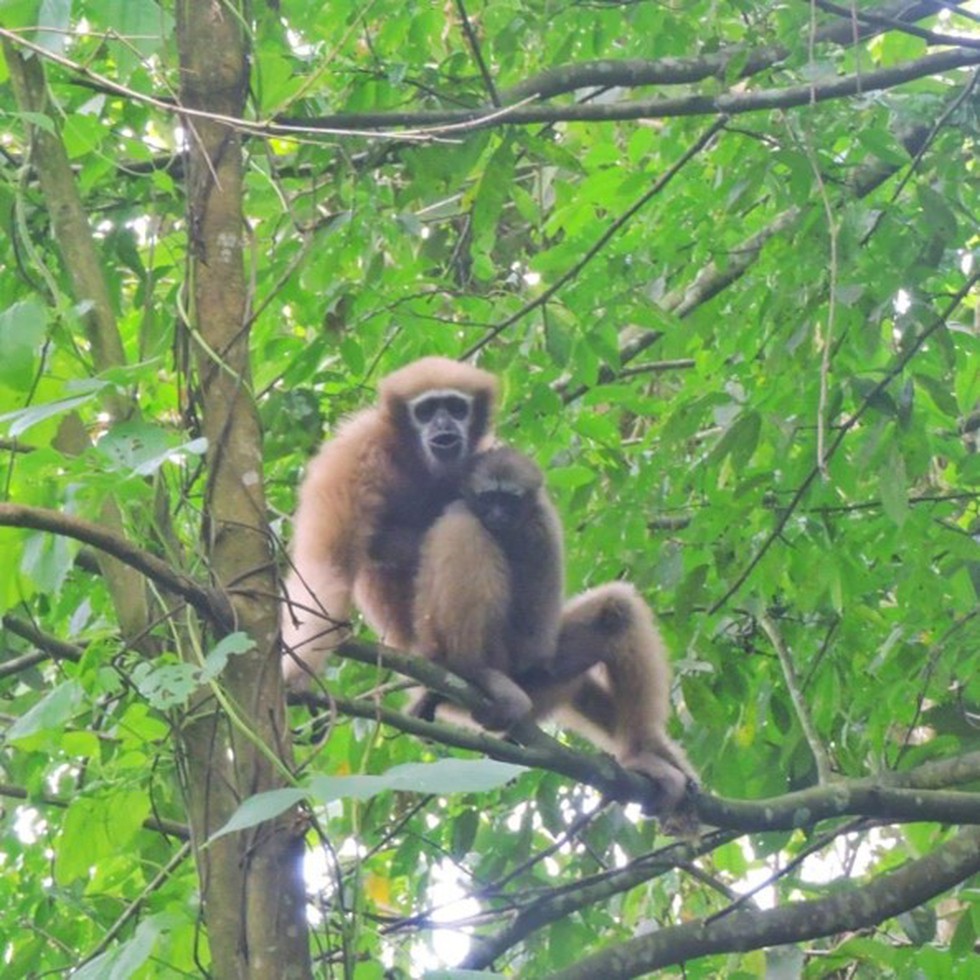
About Hoolock Gibbon:
- It is the only ape found in India.
- It is native to eastern Bangladesh, Northeast India, Myanmar, and Southwest China.
- Gibbons, the smallest and fastest of all apes, live in tropical and subtropical forests in the southeastern part of Asia.
- The Hoolock gibbon, unique to India’s northeast, is one of 20 species of gibbons on Earth.
- It is categorised into Western Hoolock Gibbon and Eastern Hoolock Gibbon.
- Like all apes, they are extremely intelligent, with distinct personalities and strong family bonds.
- Western Hoolock Gibbon
- It has a much wider range, as it is found in all the states of the north-east, restricted between the south of the Brahmaputra river and east of the Dibang river.
- Outside India, it is found in eastern Bangladesh and north-west Myanmar.
- It is listed as Endangered in the IUCN Red list.
- Eastern Hoolock gibbon
- It inhabits specific pockets of Arunachal Pradesh and Assam in India, and southern China and north-east Myanmar.
- It is listed as Vulnerable in the IUCN Red list.

About Exercise Nomadic Elephant:
- It is the 15th edition of bilateral joint military exercise.
- It is an annual training event with Mongolia which is conducted alternatively in Mongolia and India
- Soldiers of the Mongolian Armed Forces Unit 084 from and Indian Army soldiers from the JAMMU AND KASHMIR LIGHT INFANTRY Regiment will be participating in the exercise.
- The aim of this exercise is to build positive military relations, exchange best practices, develop inter-operability, bonhomie, camaraderie and friendship between the two armies.
- The primary theme of the exercise will focus on counter-terrorism operations in mountainous terrain under United Nations mandate.
- The scope of this exercise involves Platoon level Field Training Exercise (FTX).
- During the exercise, Indian and Mongolian troops will engage in various training activities designed to enhance their skills and capabilities.
- These activities include endurance training, reflex firing, room intervention, small team tactics and rock craft training. Soldiers from both sides will learn from each other’s operational experience.





























































































































































.png)
.png)
.png)
.png)
.png)


.png)
.png)
.png)





.png)
.png)






.png)
.png)
.png)
.png)
.png)
.png)
.png)
.png)
.png)

.png)







.png)
.png)


.png)
.png)
.png)


.png)

.png)
.png)





.jpg)

.png)
.png)


.png)

.png)
.png)
.png)

.jpg)

.jpg)


.png)

.png)
.png)
.png)
.png)
.png)
.png)
.png)
.png)
.png)
.png)




.png)

.png)


.png)
.png)
.png)
.png)
.png)
.png)
.png)
.png)
.png)
.png)
.jpg)
.jpg)

.png)
.png)
.png)
.png)
.png)
.png)
.png)
.png)
.png)
.png)
.png)
.png)
.png)
.png)
.png)
.png)
.png)
.png)
.png)
.png)
.png)
.png)



.png)
.png)

.jpg)
.jpg)


.jpg)
.jpg)
.jpg)
.jpg)
.jpg)

.jpg)








.jpg)
.jpg)
.jpg)
.jpg)
.jpg)

















.jpg)
.jpg)







.jpg)


















.jpg)
.jpg)






























































































.jpg)
.jpg)


























.jpg)

.jpg)










.jpg)








.jpg)




.jpg)










.jpg)


















.jpg)












































.jpg)














.jpg)
.jpg)
.jpg)





.jpg)

.jpg)
.jpg)





































































.jpg)


































.jpg)
.jpg)
















































.jpg)












.jpg)


.jpg)




.jpg)
.jpg)
.jpg)

.jpg)
.jpg)
.jpg)
.jpg)

.jpg)
.jpg)
.jpg)

.jpg)
.jpg)
.jpg)
.jpg)
.jpg)
.jpg)
.jpg)
.jpg)

.jpg)


.jpg)
.jpg)
.jpg)
.jpg)
.jpg)
.jpg)
.jpg)
.jpg)
.jpg)
.jpg)











.jpg)
.jpg)





.jpg)
.jpg)
.jpg)
























.jpg)
























.jpg)









.jpg)
.jpg)







.jpg)
.jpg)









































.jpg)
.jpg)
.jpg)
.jpg)
.jpg)

.jpg)
.jpg)
.jpg)
.jpg)
.jpg)


.jpg)
.jpg)
.jpg)
.jpg)
.jpg)

.jpg)
.jpg)
.jpg)
.jpg)
.jpg)
.jpg)
.jpg)
.jpg)
.jpg)
.jpg)
.png)

.png)
.png)

.png)
.png)
.png)
.png)


.jpg)
.jpg)

.jpg)
.jpg)
.jpg)

.png)
.png)
.png)
.png)
.png)
.png)
.png)

.png)
.png)
.png)
.png)
.png)
.png)
.png)
.png)
.png)
.png)





































































-min.png)



.png)




.png)








































